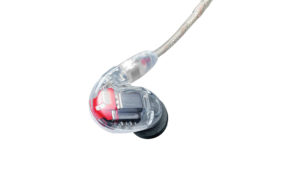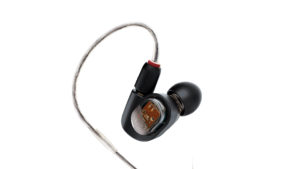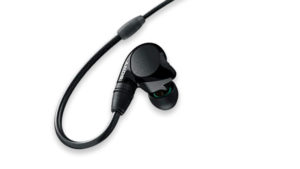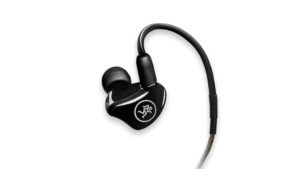
In-ear Monitors: The 7 Best Earphones to Hear Yourself On Stage
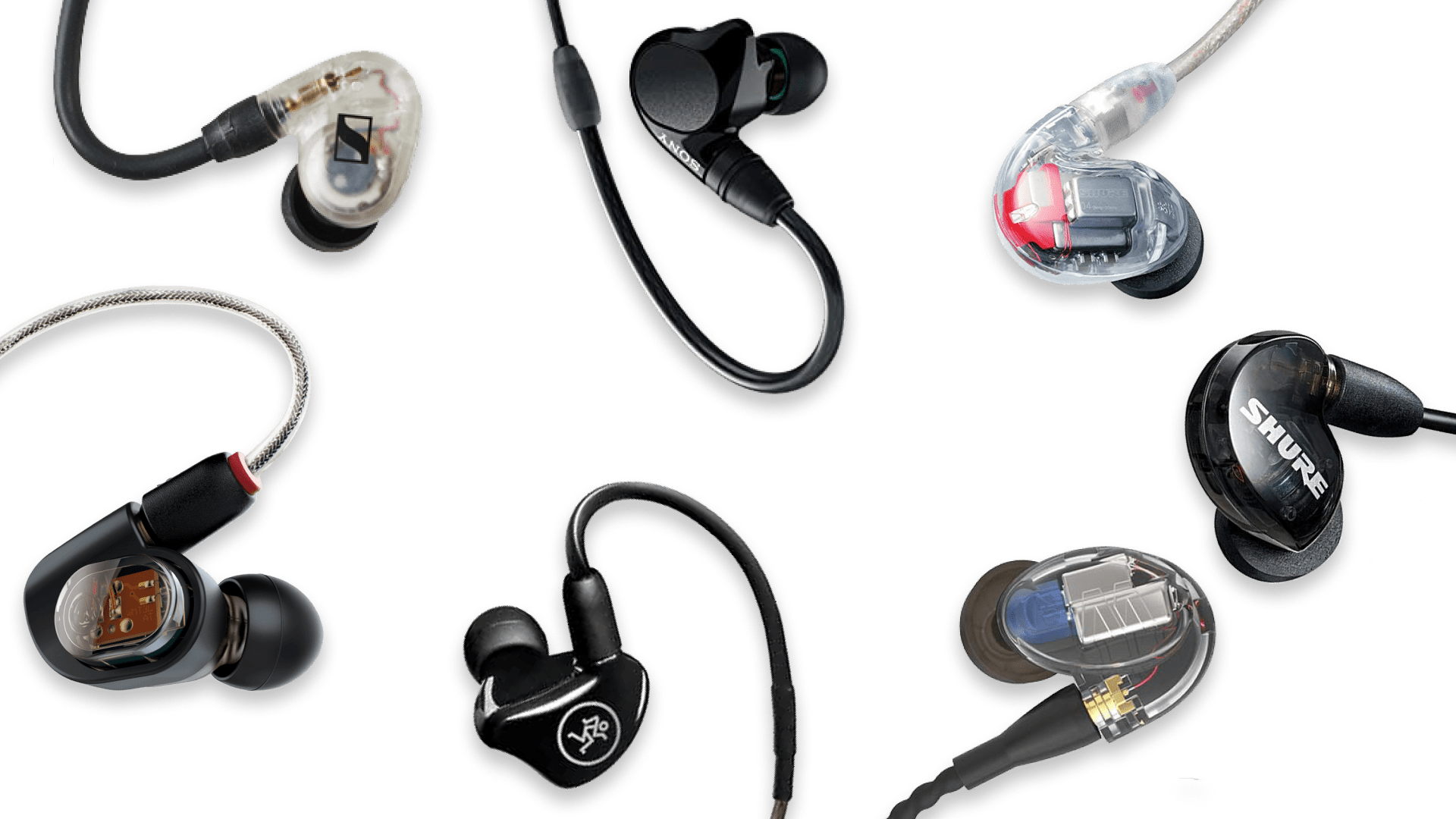
Whenever you play live on stage, you need some way to hear what you’re playing.
Many venues use traditional monitor wedges, but there’s another option.
I’m talking about in-ear monitors. These are dedicated personal monitoring devices that go directly in your ears.
Plenty of major touring artists use in-ear monitors, and many consider them the best option for hearing yourself onstage. These days, in-ears are becoming more and more common even in smaller venues.
But what exactly are in-ears monitors? Are they just headphones? What are the specific benefits to using them and which models are best?
In this article I’ll break down everything you need to know to get started with in-ear monitoring.
Gear guides, music theory tips, inspiration and more delivered weekly
Subscribe to the LANDR Blog Newsletter.
What are in-ear monitors?
In ear monitors are personal monitoring devices in a headphone format. They’re designed to go directly in a musician’s ears to provide the clearest, most direct monitor mix possible.
A set of in-ear monitors is made up of a pair of headphones connected to a portable device that includes the amplifier circuitry, wireless receiver and battery pack.
In-ear monitors are typically wireless devices that allow for greater mobility and less bulky wiring, but hard-wired versions also exist.
Wireless in-ear systems use a transmitter device to send the signal to the performers on stage. They’re sometimes custom-molded for a personalized fit, but universal models work well for many artists.
The snug fit provides extra sound isolation that greatly reduces the external noise a musician hears while wearing them.
In-ear monitors are essentially headphones, but they’re built specifically to work in a live performance environment.
In-ear monitors are essentially headphones, but they’re built specifically to work in a live performance environment.
Why use in-ear monitors?
There are several challenges in modern concert production that in-ears help solve.
First off, in-ear monitoring is often used on large stages where the musicians move a considerable distance during their performance.
It’s not practical to use monitor wedges in these situations since there would have to be multiple setups for wherever players are located.
Not only that, in-ear monitoring provides much greater accuracy than traditional wedges. The increased sound quality and superior isolation can make it easier for musicians to deliver the best performance.
It’s important to note that any loudspeaker monitoring setup has the potential to create runaway feedback. This happens when a performer’s microphone accidentally points in the direction of the monitor speaker. The signal from the microphone creates a feedback loop.
These loud, harsh squeals are distracting for performers and audience members alike. In-ears eliminate them completely by removing the monitor wedge that creates the feedback loop.
Transmitters and receivers
As I mentioned above, any wireless in-ear system consists of several pieces:
- A transmitter unit that connects to the sound source and broadcasts the signal
- A receiver unit that clips to a performer’s clothing that connects to their headset
- The earphone speakers that amplify the sound for the musicians to hear
One transmitter may be capable of broadcasting a signal to several receivers, allowing an entire band to receive a monitor mix from a single unit.
In general, in-ear systems are sold in sets, so your best bet is to choose one with the right number of receivers for your needs. That said, it’s possible to add receivers individually with some units, so look for this possibility if you think you will eventually expand your system.
It’s also important to note that sending multiple monitor signals so each musician can hear a custom mix may not be possible with a single transmitter. There’s a lot of variation when it comes to in-ears, so make sure you research them carefully!
The 7 best In-ears for musicians
While most transmitter/receiver pairs come with a set of earphones, many musicians prefer to buy their own for the best sound and fit.
In this list, I’ll be focusing mainly on the earphone component of an in-ear system since it has a significant effect on the sound quality.
1. Shure SE846
I’ll kick this list off with the premium choice for in-ear headphones.
Despite looking similar to other pairs in this guide, The Shure SE846 retail for $899 USD!
While it may seem like an insane price to pay for earphones, the incredible sound quality makes them a top choice for big tour productions.
If you need no-compromise sound, these could be the in-ears for you.
2. Sennheiser IE 40 Pro
On the other end of the budget spectrum you’ll find the Sennheiser IE 40 Pro.
While most transmitter/receiver pairs come with a set of earphones, many musicians prefer to buy their own for the best sound and fit.
These affordable IEM earphones deliver solid sound and comfort that won’t break the bank.
If you’re just looking to try out in-ear monitors without spending too much, the IE 40 Pros are great choice.
3. Audio Technica ATH-E70
The Audio Technica ATH-E70 is a great option for those who need top quality at a mid-tier price.
The design features a multi-driver configuration that delivers clear sound with plenty of bass. That puts them in the realm of other professional budget earphones, but still accessible with quality that rivals the top contenders.
4. Sony IER-M7
Sony offers its own line of excellent IEM earphones.
The IER-M7 is a solid choice that competes with many of the best on this list.
While still firmly in the professional budget tier, you’ll get all the high performance design philosophy of the pricier IER-M9 with few compromises.
So much of finding the right IEMs is about fit and comfort.
5. Shure SE215 Pro
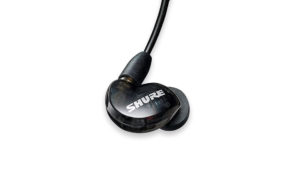
Shure is a huge name when it comes to IEM systems.
Their respected SE series contains accessible models for all budgets, including the affordable SE215. At under $200 USD, the SE215 is a single driver design, but don’t let that stop you from considering them if cost is a concern.
6. Mackie MP-220
Live sound giant Mackie several sets of respected in-ear monitors. The MP-220 are a budget conscious pair with a step-up in sound quality thanks to their dual-driver design.
7. Westone Audio UM Pro 20
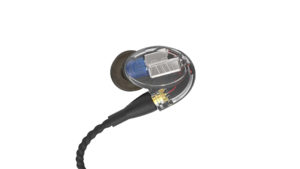
So much of finding the right IEMs is about fit and comfort.
If you’re having issues with IEM options from traditional headphone manufactures you might consider a pair from Westone Audio.
Like many of the IEM earphones on this list, the UM series offers a broad range of offers at different price points.
The UM Pro 20 sits in a comfortable price range between professional and budget options.
Custom-molded IEMs
If you decide to get serious about using IEMs, you can opt for a custom-molded set for the ideal fit.
With this type of IEM, you’ll need to have a special procedure that creates a mold of your ear canal.
The process is similar to the one used for hearing aids and can be done at most audiologist offices.
After plugging the eardrum with cotton wool, the audiologist will fill your ear canal with the material used to create the impression.
It takes a few minutes to set, but the result is a perfect impression of the shape of your ear.
From there you can send the impression to the manufacturer of your choice for custom IEM molds.
While many musicians find universal IEMs acceptable, a custom-molded pair can provide even better comfort, sound and isolation from stage noise.
IEMs and hearing safety
It’s important to protect your hearing when using any kind of headphones or monitoring devices.
Push it too loud for too long and you risk damage like hearing loss or tinnitus.
It’s especially important to be careful when it comes to IEMs. After all, their speakers are situated directly inside your ear.
On a loud stage, you may be tempted to push your monitoring volume higher and higher if your earphones don’t isolate well enough.
Avoid high monitoring levels and try not to wear IEMs for extended periods without a break.
If you feel ear fatigue, discomfort or other negative effects, it’s already time to rest your ears.
In the end, you only have one pair, and there’s no way to repair hearing damage once it sets in!
Wireless vs. Wired IEMs
There are two connection types for in-ear monitoring setups—wired and wireless.
Wired systems require a physical connection to the source of the monitor mix.
In these systems, the musicians’ movement is restricted by the cabling connecting them to the monitor source.
By contrast, wireless systems use the transmitter/receiver system described above to allow the musicians to move freely.
While this may seem superior, wired technology is usually more reliable than wireless and doesn’t suffer from any audio delay that may occur during transmission.
Wired IEM lines may be acceptable for drummers, keyboardists and other players who stay in a fixed position during performance.
That said, vocalists, guitarists and others using wireless connections already may prefer the freedom of movement allowed with wireless IEM rigs.
In-ears to hear
It’s easy to see why many top touring artists use in-ears.
Their superior sound quality and noise isolation solve longstanding issues with traditional stage monitors.
If you’ve made it through this article you’ll have the background you need to get started with IEMs.
Gear guides, tips, tutorials, inspiration and more—delivered weekly.
Keep up with the LANDR Blog.

